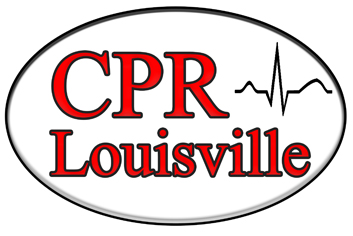Unknown Lab Report
Brendan Nahn
General Microbiology
2014 Semester
INTRODUCTION
This study was done in a microbiology class at STLCC Meramec. Students were given a broth tube containing two unknown bacterium and told to identify them. The study was done to prove students could apply techniques and methods learned throughout the class to correctly identify the bacterium. This is important so health care providers can study these bacterium and learn more about them, and also help cure patients who are sick and get them on the correct antibiotics or treatments for the specific bacterial infection they have.
MATERIALS AND METHODS
A broth tube marked with the number 121 was provided by the lab instructor. The tube contained two bacterium; one Gram positive (+) and one Gram negative (-). The methods in the general microbiology laboratory manual by Virginia McDonald were used to help correctly identify the unknowns unless otherwise stated. The first procedure was a four quadrant isolation streak1 (pg 10). This was done to try and get two distinct separate colonies to grow. The streak was done on a Nutrient Agar (NA) plate and incubated at 37° Celsius (most incubations were at this temp) for two days. After these two days, only one distinct colony was present. This was Gram stained1 using the method in the lab manual (pg 67) and found an abundance of purple cocci with very few pink rod. Another distinct colony was inoculated onto a Mannitol Salt Agar (MSA) using the same isolation streak method. An MSA tube was also used to confirm the agar plate since they can sometimes give a false positive. This medium is differential and selective. It is selective for Gram positive because its high salt content inhibits Gram negative, and it is differential for mannitol fermenters. MSA was used was to try and get the Gram positive isolated from the Gram negative, and were labeled unknown P for the prediction it would be the positive bacteria. Two other media were used this day to isolate the Gram negative which wouldn’t seem to grow in a NA with the positive. This included using two MacConkey Agars which are also differential and selective. It selects for Gram negative because it contains bile salts and crystal violet which inhibit Gram positive, and is differential for lactose fermentation. A less distinct colony from the original NA agar was inoculated and streaked onto one MacConkey agar, while the other was done by streaking from the original broth tube both labeled unknown N. All media was incubated for five days at room temperature to prevent from overgrowth. After the 5 days all media was observed and gram stained to confirm isolation and correct classification of positive or negative. Once confirmed biochemical tests were done from an identification list to identify the specific type of bacterium. Since unknown P turned out to be positive after gram staining from the MSA, a nitrate and catalase test were done and the result of the MSA tests were used. Unknown N was gram stained and confirmed negative so a nitrate was also completed as well as Sulfur Indole Motile (SIM), urea, and EMB tests.
All of the following tests were performed on unknown P:
- Mannitol fermentation
- Nitrate reduction
- Catalase
See table 1 for results
All of the following tests were performed on unknown N:
- Nitrate reduction
- SIM ( Sulfur [H2S], Indole, Motility)
- Urease
- Lactose fermentation
See table 2 for results
Results
Unknown P was isolated onto an MSA agar and the plate and broth tubes turned yellow indicating a positive result for acid production. The result of the nitrate test (pg 38) was positive which confirms nitrate reduction. Finally the catalase test was also positive meaning it produces catalase; all shown in table and flowchart form below.
Table 1
| Test | Purpose | Reagents/Media | Observations | Results |
| Gram Stain | Determine if bacteria in unknown #121 was positive or negative | Crystal Violet, Iodine, Alcohol, Safranin | Clusters of purple cocci | Gram positive cocci |
| Mannitol | Determine if the bacteria ferments manntiol and/or produces acid | Agar plate; High salt concentration, mannitol sugar, Phenol red | Yellow medium | Positive for acid |
| Nitrate | Determine if bacteria can reduce nitrate to nitrite (or further) | Broth tube; Nitrate A&B, Zinc (powder) | Did not turn red after adding zinc | Positive for nitrate reduction |
| Catalase | Determine if bacteria produces the enzyme catalase | Hydrogen Peroxide | Produced oxygen bubbles after adding to bacterium | Positive for catalase |
Flowchart for Unknown P
| Gram Stain | |||||||
| Gram positive cocci | |||||||
| MSA test (positive) | |||||||
| Positive | Negative | ||||||
| Staphylococcus aureus | Bacillus cereus | ||||||
| Enterococcus faecalis | Bacillus subtilis | ||||||
| Staphylococcus epidermidis | |||||||
| Nitrate test (positive) | |||||||
| Staphylococcus aureus | |||||||
| Catalase test (positive) | |||||||
| Staphylococcus aureus | |||||||
Unknown N was isolated onto a MacConkey Agar which turned brick red indicating a positive result for lactose fermentation and had a metallic sheen meaning a strong acid production. This was followed by a urea test which did turn hot pink to indicate a positive result for the enzyme urease. Finally the nitrate test was performed and concluded a negative result. The SIM test was inconclusive; also shown in table and flowchart form below.
Table 2
| Test | Purpose | Reagents/Media | Observations | Results |
| Nitrate | Determine if bacteria can reduce nitrate to nitrite (or further) | Broth tube; Nitrate A&B, Zinc (powder) | Media turned red after adding zinc | Negative |
| SIM | Determine if bacteria reduces sulfur, produces indole, and motile | Broth tube | No change in tube | Inconclusive |
| Urea | Determine if bacteria produces enzyme urease | Broth tube | No change in tube | Negative |
| Lactose | Determine if bacteria ferments lactose | EMB (Eosin Methylene Blue) Agar and MacConkey Agar | Green Metallic Sheen on EMB, Brick red on MacConkey | Positive for strong acid production and lactose fermentation |
| Gram Stain | Determine if bacteria in unknown #121 was positive or negative | Crystal Violet, Iodine, Alcohol, Safranin | Pink rods | Gram negative |
| Gram Stain | |||||||
| Gram negative rods | |||||||
| Urea test (negative) | |||||||
| Positive | Negative | ||||||
| Klebsiella pneumoniae | Escherichia coli | ||||||
| Proteus vulgaris | Enterobacter aerogenes | ||||||
| Pseudomonas aeruginosa | |||||||
| Indole test (inconclusive) | |||||||
| Nitrate test (negative) | |||||||
| Positive | Negative | ||||||
| Enterobacter aerogenes | Escherichia coli | ||||||
| Pseudomonas aeruginosa | |||||||
| EMB test (positive with green metallic sheen) | |||||||
| Escherichia coli | |||||||
Discussion/Conclusion
The Unknown #121 was a combination of two different bacterium, one Gram positive and one Gram negative. Unknown P was successfully identified as Staphylococcus aureus. After a successful Gram stain it was classified as a Gram positive cocci which narrowed it down to three bacteria; Staphylococcus aureus, Staphylococcus epidermidis, and Enterococcus faecalis. Since S. aureus was isolated onto an MSA plate and broth that turned yellow, which indicates a positive for acid, it took Staphylococcus epidermidis off the list. The only two tests that remained to separate between S. aureus and E. faecalis was a nitrate and catalase test. Both were performed and both were positive which, after using our identification charts, concluded that only Staphylococcus aureus was correct. No problems were encountered during the identification of this bacterium.
Unknown N was successfully identified as Escherichia coli. A successful Gram stain classified it was a Gram negative rod which didn’t narrow it down to any two or three bacteria, but the stain made sure we had a pure Gram negative culture. Since E. coli was isolated on a MacConkey Agar and was positive for lactose fermentation, this narrowed it down to three bacteria; Escherichia coli, Klebsiella pneumonia, and Enterobacter aerogenes. A urea test was conducted which came back negative and took Klebsiella pneumonia off the list. A nitrate test was also performed on this bacterium which came back negative, so only left Escherichia coli on the list. One problem was encountered during the identification of this bacterium. An indole test alone would have proved it was E. coli but came back inconclusive because there was no H2S, indole, or motility, which with any of the three on the list would have produced some clear distinct result. An EMB test was done to confirm the nitrate test, when E. coli grows on an EMB agar it gives off a green metallic sheen which it did.
Staphylococcus aureus is a Gram positive bacterium that is found almost everywhere, typically on the skin and in the nose of about 30% of individuals. It is an opportunistic pathogen and causes a wide range of infections from a simple infection involving swelling and redness to more serious infections such as MRSA or osteomyelitis (bone infection). It can not only be extremely pathogenic and fatal but resistant to antibiotics as well. S. aureus seems to always become resistant to any antibiotic we throw at it. First penicillin, then methicillin, and now some vancomycin resistant cases are starting to appear which means soon we won’t have an antibiotic to treat a resistant strand of staph. Studies have been done by the CDC and NHSN about MRSA just these past few years and have shown that nosocomial (hospital acquired, also seen as HA-MRSA) infections have reduced dramatically, almost 50%, but community-associated MRSA (CA-MRSA) has rapidly increased2. CA-MRSA is extremely more virulent then HA-MRSA and has been seen to spread more quickly than HA-MRSA.
It is unknown as to why two different healthy individuals will have the same strand of CA-MRSA where one will be treated easily and the other will develop a severe fatal infection. Overall, Staphylococcus aureus is a very hit or miss bacteria, it can either be treated fairly easy or just be downright lethal.
References
- McDonald, Virginia, Mary Thoele, Bill Salsgiver, and Susie Gero. Lab Manual for General Microbiology. St. Louis Community College at Meramec, 2011.
- Todar, Kenneth, PhD. “Staphylococcus Aureus and Staphylococcal Disease.” Staphylococcus Aureus. Kenneth Todar PhD, n.d. Web. 23 Apr. 2014. <http://textbookofbacteriology.net/staph.html>.
- “Staphylococcus Aureus in Healthcare Settings.” Centers for Disease Control and Prevention. Centers for Disease Control and Prevention, 17 Jan. 2011. Web. 22 Apr. 2014. <http://www.cdc.gov/hai/organisms/staph.html>.





